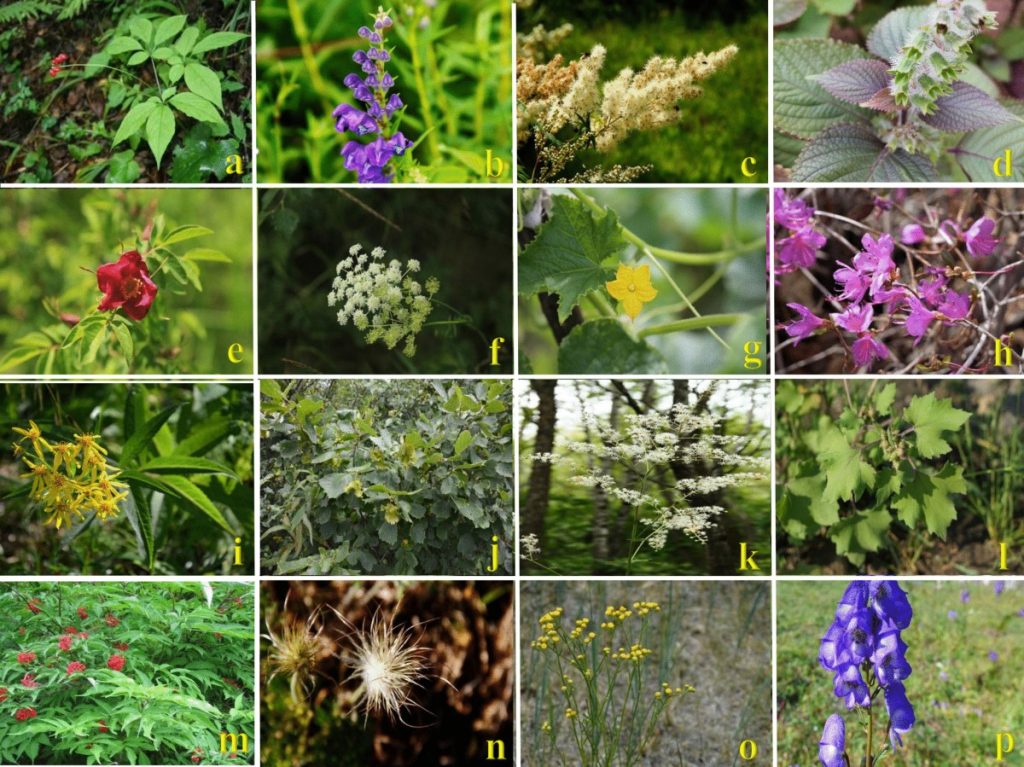Ethnobotany in Pet Nutrition: Local Plants and Their Nutritional Benefits

The Bounty of Nature: Unleashing the Power of Local Plants
The intersection of nutrition and pet wellness is gaining traction, especially as pet owners in Nigeria become more conscious of what they feed their furry friends. The ancient practice of ethnobotany serves as a guiding light, illuminating the richness of our indigenous flora and its potential benefits for pet health. This age-old knowledge not only shows the versatility of local plants but also emphasizes the significance of traditional practices in contemporary pet care.
Among the numerous plants that thrive in Nigeria’s diverse climates, some stand out for their exceptional nutritional benefits. These lesser-known botanical treasures not only add variety to pet diets but also support overall health and vitality. Here are a few noteworthy examples:
- Moringa Leaves: Often dubbed the “miracle tree,” moringa leaves are nutrient-dense and packed with vitamins A, B, and C. These vitamins are instrumental in boosting the immune systems of pets, helping them fend off illnesses and infections.
- Neem: A revered plant in traditional medicine, neem is famed for its antibacterial and antifungal properties. Incorporating neem can significantly enhance dental health in pets, reducing the chances of plaque buildup and gum disease.
- Ginger: Known for its warming qualities, ginger is a powerful digestive aid. It can alleviate nausea and soothe upset stomachs, making it a beneficial addition to the diets of pets prone to motion sickness or digestive disturbances.
- Hibiscus: This vibrant flower not only adds a pop of color but is also rich in antioxidants. Hibiscus extract can promote healthy skin and fur, potentially warding off issues like dryness and irritation.
Integrating these local plants into pet diets is not just about nutrition; it’s also about weaving elements of cultural heritage into modern practices. For example, consider the communal knowledge shared among local farmers and herbalists about optimal preparation methods for these plants, such as steeping moringa leaves in warm water to release their nutrients before adding them to pet food.
As we venture further into the realm of ethnobotany and its implications for pet nutrition, it becomes clear that there’s a wealth of information waiting to be uncovered. By exploring and documenting these natural resources, pet owners can take meaningful steps toward creating a balanced and nourishing diet for their beloved animals. This exploration not only supports the health of pets but also cherishes and perpetuates local traditions, allowing readers to connect with their heritage while caring for those they cherish.
The journey into Nigeria’s local flora for pet wellness is just beginning. We encourage you to dive deeper into this fascinating topic, challenge the conventional approaches to pet care, and harness the natural gifts that surround us.

CHECK OUT: Click here to explore more
Exploring Nutritional Riches of Local Flora
As the conversation around sustainable pet nutrition shifts towards harnessing the power of local resources, it becomes increasingly vital to understand the role of ethnobotany in pet diets. The diverse ecosystems in Nigeria play host to an array of plants that are not only beneficial for humans but also serve as nutrition-packed additions for our pets. This rich botanical heritage presents a unique opportunity to redefine what we consider as wholesome and nutritious pet food.
Traditional knowledge passed down through generations highlights the importance of incorporating regional plants into pet diets. Not only does this approach provide necessary nutrients, but it also encourages a significant reduction in the environmental impact associated with imported pet food products. Understanding the nutritional profiles of some local plants can provide guidelines for pet owners looking to embrace more holistic practices.
Local Plants with Nutritional Advantages
Here are more remarkable local plants that have been identified for their potential health benefits for pets:
- Pawpaw Leaves: Beyond their use in human diets, pawpaw leaves are rich in vitamins and enzymes that can aid digestion in pets. The presence of papain, an enzyme that helps break down proteins, makes pawpaw leaves particularly beneficial for pets with digestive issues.
- Okra: This vibrant green vegetable is not just a staple in many Nigerian homes. It is acclaimed for its fiber content, which promotes healthy bowel movements and supports overall digestive health in pets. The nutrients found in okra, including vitamins A, C, and K, contribute to pet vitality.
- Ginger: Often celebrated for its medicinal properties in human diets, ginger can also benefit pets. It has anti-inflammatory properties and can alleviate nausea, which makes it helpful for animals that experience motion sickness during travel.
- Pineapple: While not exclusive to Nigeria, the tropical goodness of pineapple contributes essential vitamins, particularly vitamin C, which is vital for collagen production and healthy skin in pets. Feeding small amounts of pineapple can be a refreshing treat that aids hydration.
Utilizing these plants requires care and understanding of suitable preparation methods. For instance, pawpaw leaves can be dried and crushed to create a powder that integrates easily into pet food or treats, while okra could be lightly steamed before serving, enhancing its digestibility. Recognizing the best ways to incorporate these botanical treasures into daily meals can help enhance not only palatability but also the absorption of nutrients.
As this exploration into ethnobotany unfolds, it reveals endless opportunities for enriching pet diets. Not only do these plants reflect our cultural heritage, but they also serve practical roles in promoting health and wellness. By embracing local resources and traditional wisdom, we pave the way for nutritionally balanced pet care rooted in nature’s bounty. The intricate relationship between plants and animal nutrition highlights a path toward a more sustainable and health-conscious future for our pets.
Exploring Local Plants in Pet Nutrition
The field of ethnobotany in pet nutrition unveils a fascinating world of local plants that hold remarkable nutritional properties beneficial for our furry companions. This emerging field combines traditional knowledge and modern science to illustrate how certain botanical species can enhance animal diets, bringing both health benefits and sustainability into pet care practices.
Many pet owners may be surprised to learn that common local plants, often viewed merely as weeds or ornamentals, can dramatically improve their pets’ overall well-being. For example, chickweed, often found in backyards, is a rich source of vitamins A and C, and can aid in digestion and alleviate skin irritations in pets. Similarly, dandelions offer potent diuretic effects and can support liver function, making them a valuable addition to homemade pet diets.
When considering these natural alternatives, it’s essential to prioritize less processed food options. This approach not only caters to the health of pets but also aligns with ecological sustainability by reducing reliance on mass-produced pet foods that may contain artificial additives. Local plants can play a crucial role in diversifying pet diets while addressing specific health conditions such as allergies, obesity, and digestive issues.
The nutritional benefits of various plants extend beyond basic health; they contribute to enhancing the immune system and promoting a healthier coat and skin. Research continues to reveal new potential in herbs and greens that have been overlooked in conventional pet nutrition. As pet owners become more aware of these options, the relevance of ethnobotany in shaping a more natural, holistic approach to pet feeding becomes increasingly apparent.
| Local Plant | Nutritional Benefits |
|---|---|
| Chickweed | Rich in vitamins A and C; aids digestion and alleviates skin irritations. |
| Dandelion | Promotes liver function, acts as a diuretic, and supports overall health. |
As research continues to validate the efficacy of these local plants, responsible pet owners are encouraged to explore nutritional options that incorporate ethnobotanical principles. This not only enriches pet diets but also fosters a greater appreciation for the interrelationship between native flora and pet health.
LEARN MORE: This related article may interest you
Integrating Local Flora into Pet Diets for Optimal Health
Incorporating local plants into pet diets not only speaks to the principles of sustainability but also aligns with the growing trend towards holistic pet care. The concept of utilizing ethnobotanical resources in pet nutrition opens a dialogue about the diverse benefits of indigenous flora that have been utilized for centuries. Beyond the valuable nutrients these plants offer, they also provide a rich complement to commercial pet foods, enhancing pet meals both nutritionally and taste-wise.
One noteworthy aspect of this integration is the potential for synergistic health benefits when combining various local plants. For example, pairing bitter leaf (Vernonia amygdalina) with <strong_okra can create a powerful combination aimed at strengthening the immune system while promoting digestive health. Bitter leaf is renowned for its high antioxidant content and ability to combat inflammation, making it an excellent addition to any pet’s diet. Its unique flavor profile might take some getting used to for pets, but when mixed with sweeter vegetables like okra, it can be more palatable while also providing an array of vitamins and phytonutrients.
Furthermore, pet owners have the opportunity to explore the benefits of using African basil (Ocimum gratissimum), known locally as “Efirin.” This aromatic herb has been widely praised for its antibacterial properties and ability to combat common pet ailments, including skin infections and parasitic infestations. A sprinkle of dried or freshly chopped African basil in pet meals not only enhances flavor but also boosts overall health, making it an attractive option for pet parents interested in natural remedies.
Another fascinating plant that warrants attention is the moringa tree (Moringa oleifera), often dubbed the “miracle tree” due to its exceptional nutritional profile. Moringa leaves are a powerhouse of essential amino acids, vitamins (such as vitamin A and vitamin C), and minerals like iron and calcium. Its incorporation into pet food, either as a powder or mixed with homemade treats, offers excellent support for bone health, immune function, and skin vitality.
The Path Towards Education and Innovation
To facilitate the incorporation of these local plants into pet diets, there is an increasing need for education and innovation among pet owners, veterinarians, and pet food manufacturers. Workshops, community meetings, and online resources can play a vital role in sharing knowledge about the bioactive compounds found in local flora and their potential benefits. Practical workshops on how to prepare and utilize these plants could empower pet owners to confidently adopt ethnobotanical practices.
Collaborations between agricultural experts and veterinary professionals can further enhance this movement, leading to research that emphasizes the importance of traditional knowledge in contemporary pet nutrition. Initiatives like local farming of these botanicals can make it feasible for pet food producers to source fresh, high-quality ingredients sustainably, thus positively impacting the economy.
The exploration of ethnobotany in pet nutrition can pave the way for innovative pet food formulations. Entrepreneurs inspired by these traditional plants may develop novel products that strictly adhere to nutritional needs while paying homage to cultural appreciation. By harnessing the potential of local plants and integrating them into pet nutrition, we are not only nourishing our pets but also nurturing community heritage and biodiversity.
YOU MAY ALSO LIKE: Read read another article
Conclusion: Embracing Ethnobotany for a Healthier Pet Diet
The exploration of ethnobotany in pet nutrition reveals exciting opportunities to enhance our pets’ diets through the incorporation of local plants. As we have seen, plants such as bitter leaf, African basil, and moringa not only provide essential nutrients but also serve as natural remedies for various health issues. These indigenous plants, cherished in many Nigerian cultures, offer a wealth of vitamins, minerals, and bioactive compounds that can significantly improve the health and well-being of our pets.
Moreover, engaging with local flora fosters a sense of sustainability and promotes a deeper connection to our environment and cultural heritage. The integration of ethnobotanical knowledge into contemporary pet care encourages a holistic approach that values both nutrition and tradition. As pet owners become more informed about the nutritional benefits of these plants, the demand for innovative, natural pet food solutions will likely grow, paving the way for beneficial collaborations between local farmers, veterinarians, and food manufacturers.
In conclusion, prioritizing ethnobotany in pet nutrition is more than just a passing trend; it is a movement that has the potential to transform how we nurture our pets, all while respecting local ecosystems and cultural practices. As we continue to unlock the secrets of our native plants, we not only enrich our pets’ diets but also create a ripple effect that supports the broader community and the planet. By embracing this ethnobotanical wisdom, we are set to embark on a journey towards healthier, happier pets and a more sustainable future.


